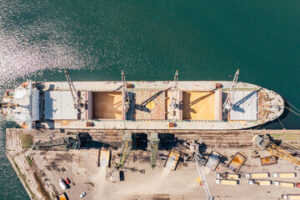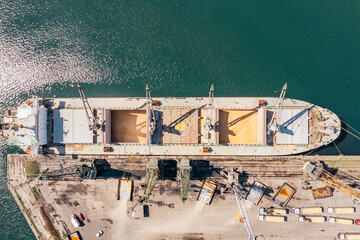Hiring a professional Boat Dock Construction Charleston SC is best if you are Vila-worthy and have the time and amenable shoreline and water depth. Much like decks, docks are constructed of a variety of materials. Pressure-treated wood is typically the most cost-conservative option but can deteriorate in an environment constantly exposed to moisture.
 When designing a boat dock, consider the desired functionality, features and materials to maximize the use of your waterfront property. You’ll also want to consider environmental factors such as the surrounding water and wind conditions.
When designing a boat dock, consider the desired functionality, features and materials to maximize the use of your waterfront property. You’ll also want to consider environmental factors such as the surrounding water and wind conditions.
A boat dock is a flat marine structure that’s designed to hold boats and allow easy access to them. It is typically surrounded by water on three sides and it can be either floating or fixed in place. Boats are tied up to it with lines to the dock cleats or pilings and the front of the boat is moored against one of the fingers. The other two sides are open to the water and a boater can sit or stand on the dock to enjoy the beautiful view of the water.
There are many different kinds of boat dock designs, and the best choice depends on what you’re planning to use your dock for. If you are only going to use it for your boat, a straight and simple dock may be enough. On the other hand, if you are planning to entertain or have more than one boat, it is important to make sure that your dock can accommodate them all and they are easy to get in and out of.
If you’re on a busy body of water, a floating dock may be the better choice as it will move with the waves and adjust automatically to high or low tides. It’s also a good choice if you want to add gazeboes or other amenities that require stability.
Most docks are built using a combination of materials. Wood, aluminum, and HDPE are popular choices amongst boat dock builders. Each material has its own set of benefits, but the choice ultimately depends on your budget and lifestyle.
Once the frame of the dock is complete, it’s time to add the decking material. Decking is usually done once the outer supports and shoreline support posts are in place, but you can also build it on top of a foundation made of concrete or even a seawall.
Materials
The materials used for a dock can significantly impact the cost and overall quality of the project. Wood, concrete, aluminum and plastic are all popular choices. Each material offers different benefits and requires varying levels of maintenance.
The most traditional material for a dock is wood. It is a versatile choice that can be treated to withstand harsh environments. The treatment protects against rot, parasites and other environmental damage. It is also easy to work with, making it a popular choice for homeowners. Wood docks are usually anchored by pilings that must be driven into the ground for strength and stability.
Floating pontoon docks are another common choice for residential docks. Unlike fixed docks, these structures rise and fall with the water level. They are typically supported by walls of sheet-steel piling driven to bedrock, which helps to keep the structure afloat. They are a great option for docks that need to be moved regularly or for large boats.
Another alternative for a floating dock is an inflatable platform. These are similar to rafts but have the advantage of being easy to store and set up. They are not as durable as a fixed dock, however.
Steel is a heavy and expensive material, but it provides an extremely sturdy and strong foundation for any type of dock. It is a durable choice that resists rust, corrosion and the wear-and-tear of everyday use. It is also the sturdiest and safest option for mooring boats.
For a more affordable option, many homeowners choose to build a dock with pressure-treated southern yellow pine. It is a highly durable material that can be stained or painted to match the surroundings. However, it is susceptible to rot and requires regular upkeep.
Other options include a cedar or composite dock. Cedar is a natural wood that has a higher resistance to rot and insect damage than other types of lumber. It is also resistant to the corrosive effects of salt and brackish water. Another popular option is a composite deck made of a mix of HDPE and fiberglass. This material is weatherproof and able to withstand the Florida sun.
Permits
If your dock is beginning to rust or if you want to make improvements, you need a permit to ensure your work is up to code. The type of permit required depends on the area in which you live, the policies of your homeowner’s association, and local laws. Many states, cities, and towns have specific regulations about the size and location of a boat dock.
State water bottoms are submerged lands that begin at the mean low water mark, or MLW. They are typically the submerged lands owned by the state or a government agency.
The construction of a dock, wharf, or boat piling in state waters must be accompanied by a construction permit. A permit can be obtained from the local building department or planning office. The permit must be accompanied by a plan of the proposed structure and specifications to demonstrate compliance with all applicable land use and shorelines regulations.
Private docks built in public trust waters are generally limited to the minimum encroachment that provides “reasonable” access to the water. This usually consists of a four-foot wide fixed pier extending to mean low water and a 100 square foot float, although there are exceptions based on navigation issues, proximity to the riparian rights of adjacent waterfront property owners, or the presence of leased oyster grounds.
In addition to the size requirements, private docks built in public trust waters must comply with state and local regulations regarding navigation channels, sensitive coastal resources, and the placement of structures that interfere with tidal flow. All docks and associated gangways must also be located to avoid interfering with the tidal flow in a navigable channel.
For some areas, docks are permitted through a standard activity permit (SAP). For most other areas, it is necessary to apply for a Certificate of Permission (COP). This streamlined authorization process generally takes 90 days. During this time, the application will be reviewed to determine if there are resource, navigation, or public trust concerns that can be avoided or mitigated by the proposed project.
In addition, the COP process may require that the contractor demonstrate that it has the proper workers’ compensation and liability insurance coverages for marine construction work performed on the water. Moreover, the COP may require that the applicant provide the name and contact information of a certified marine surveyor who will inspect the project during construction to assure that the work is conducted in compliance with the SAP and the local and state regulations.
Installation
Choosing a professional builder who specializes in docks is a wise move. They will be familiar with state and local regulations regarding boat dock construction, including permitting. They should also be able to provide you with a list of satisfied clients. If you do decide to hire a builder, select one that is licensed and insured. They should also be experienced in marine construction and have an excellent reputation. A well-designed and built dock can increase your property value. It will add beauty and value to your home and provide a place for family and friends to gather.
While you’re at it, you might want to consider constructing a dock fishing area or a grilling platform. In some areas, it’s also possible to add a kayak launch, and you can even install an electric lift for your boat.
In addition to a design plan, you need to decide what features and materials will make the most of your investment. For example, if the deck is fully exposed to sunlight, you can reduce heat by using light-colored decking materials. You could also build an awning or canopy for shade.
Many municipalities dictate the size of a dock that can be constructed, and it’s important to follow these guidelines. Otherwise, you could face fines and/or removal of your dock in the future.
When it comes to the foundation of your dock, you can choose from concrete block anchors or a floating system. If you opt for concrete anchors, you should use hot-dipped galvanized fasteners, as they’re far more durable than regular fasteners. These will resist rust, which can weaken the structure over time.
Another option is a post dock. These are popular, and they offer stability and a sense of permanence that floating docks can’t. You can build your own post docks or purchase pre-fabricated units from a manufacturer.
When selecting a boat dock, you should take into account the weather conditions where you live and the water depth at your location. Some lakes may have deeper water than others, and if your new dock is too shallow, you could be at risk of boat and water damage. In such a situation, you can ask a local lake expert to assess the water depth and shoreline before you build your dock.
